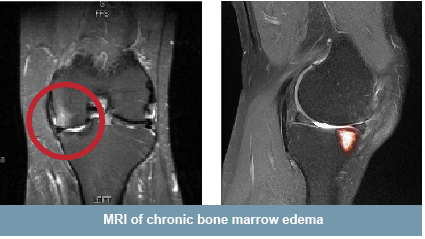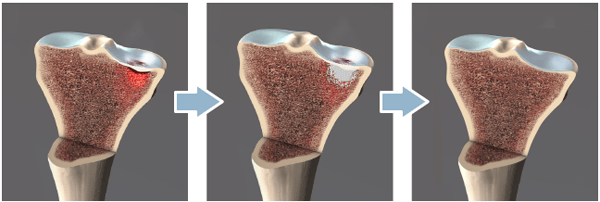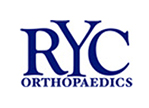Subchondroplasty

What is Subchondroplasty
The Subchondroplasty™ procedure is a minimally invasive surgery designed to treat subchondral defects associated with chronic bone marrow edema (BME) by filling them with a hard-setting, biomimetic bone void filler.
Chronic BME is a defect of the bone typically 0-10 mm below the cartilage. Chronic BME is characterized by an area of inflamed edema surrounding micro fractures or defects. Many surgeons believe that chronic BME will not heal without treatment.
Chronic BME can only be seen on MRI.

The SCP® procedure is performed either alone or in conjunction with other arthroscopic treatments (meniscus treatment, cartilage treatment)
The SCP® procedure is designed to access and treat subchondral defects associated with chronic BME. The SCP® procedure does not treat or repair damage to the cartilage, ligaments, meniscus, or synovial tissue.

During the procedure, your surgeon will use a guide instrument to access the subchondral defect and fill it with a bone substitute to allow new, healthy bone to repair the defect.

The SCP® procedure is typically performed in an out-patient setting, meaning patients usually return home the same day.
What Are Some Precautions and Risks for This Treatment
All surgical procedures, including minimally invasive treatments carry a certain level of risk. Only your surgeon can determine ifyou are healthy enough for surgery. Talk to your surgeon for a complete assessment of possible risks.
What Are Some Alternatives to the SCP® Procedure?
Patients may consider trying conservative treatments such as non-steroidal antiinflammatory medicine, physical therapy, and/or unloader bracing. Additionally, patients may also consider alternative surgical interventions such as high-tibial osteotomy and total knee replacement.
What Will My Recovery Look Like?
- Following surgery, you can put weight on your leg as tolerated (unless otherwise instructed). Walking may be painful and it is typically necessary to use a cane, crutches, or walker for a short period of time after surgery.
- You will be given a prescription for outpatientphysical therapy. You should start therapy within a few weeks following surgery.
- Some patients will report significant pain for 1 -2 days immediately following surgery. To control this pain:
- Use pain medicine as prescribed by your doctor
- Elevate your leg above the level of your heart
- Apply ice to your knee for 15 minutes 3 or 4 times per day
- If a sterile dressing was applied to the area, it may be removed within 1–2 days following surgery.
- Any adhesive strips under the dressing, should not be removed. However, if they wash off when showering, it is not a problem.
- You may shower the day after surgery when the dressing is removed. However, do not soak in a tub, pool or any other body of water for two weeks after surgery.
- If you have signs of infection, which include fever of 101 degrees or greater, flu-like symptoms, redness, swelling, or excessive pain, please call your surgeon immediately.





